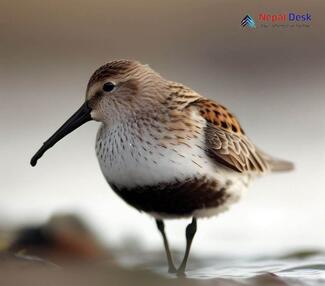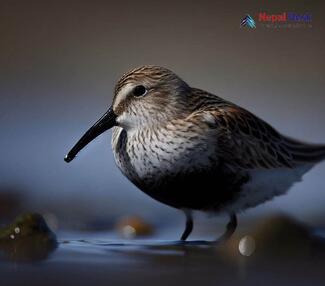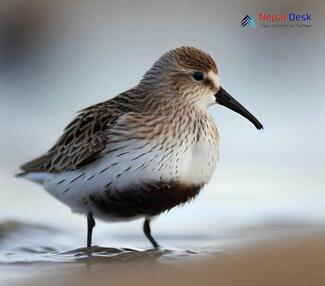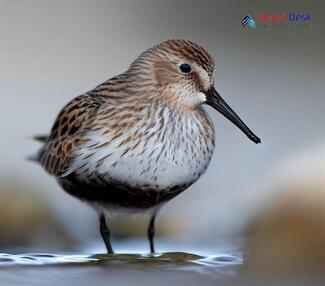Nepal, a beautiful country nestled in the lap of the Himalayas, is a paradise for nature enthusiasts and birdwatchers alike. Among the diverse collection of birds that call this location home is the Dunlin (Calidris alpina), a small wading bird with a distinctive appearance and unique behavior. The dunlin was formally described by the Swedish naturalist Carl Linnaeus in 1758 AD under the binomial name Tringa alpina. This species was formerly placed in the genus Erolia but is now placed with other sandpipers in the genus Calidris that was introduced in 1804 by the German naturalist Blasius Merrem. Now, let us look at the various aspects of these fascinating creatures and share some tips for observing them during your visit to Nepal.
Meet the Dunlin: A Delightful Wading Bird
The Dunlin is a small migratory wading bird from the Scolopacidae family. With its striking plumage and crescent bill shape, birdwatchers can easily identify these captivating creatures. They possess a distinctive brown and greyish pattern on their backs and white underparts, providing excellent camouflage against their wetland habitats. One interesting feature of the Dunlin is its rufous-colored patch on its back, which becomes prominent during the breeding season. When in flight, you can see a striking black-and-white pattern on their wings, further enhancing their visual appeal.
Where to Find Dunlins in Nepal
The wetlands around Nepal serve as ideal habitats for Dunlins. Some popular sites for spotting these birds include Koshi Tappu Wildlife Reserve, Chitwan National Park, and Jagadishpur Reservoir. These locations provide ample feeding opportunities for them as they mainly feast on insects, crustaceans, mollusks, and worms found in mudflats and shallow water.
Migratory Patterns and Habitat Preferences
Although not native to Nepal, the country serves as an essential resting point during Dunlin migration between arctic breeding grounds and southern wintering locations. They usually arrive during October-December and begin their return journey in February-March. Dunlins thrive in various habitats, including coastal lagoons, estuaries, and large rivers with mudflats and sandbanks. During migration, Nepal's vast wetlands offer critical stopover sites for these birds to rest and refuel before continuing their journey.
Tips for Observing Dunlins in Nepal
If you're a birdwatcher keen on spotting Dunlins during your visit to Nepal, here are some useful tips:
- Visit during peak migratory season: If you want to witness these intriguing birds up close, time your visit between October-December and February-March.
- Bring binoculars or a spotting scope: These tools will help you observe the birds from a distance without disturbing them.
- Be patient and respectful: As with any type of birdwatching, respect the wildlife by keeping a safe distance and waiting quietly for them to appear.
- Hire a local guide: Local guides who are familiar with the region's birdlife can significantly increase your chances of locating these elusive creatures.
In conclusion, keen birdwatchers should consider putting Dunlins on their must-see list when visiting Nepal. These charming waders offer an unforgettable sight as they navigate the country's wetlands and contribute to the rich biodiversity found in this stunning Himalayan destination. So pack your bags and binoculars and embark on an exciting birdwatching adventure in Nepal.




